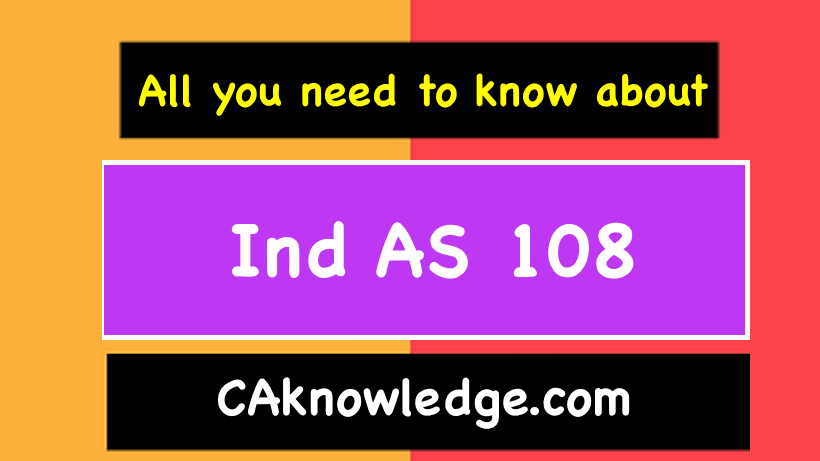Ind AS 108, Operating Segments: An entity shall disclose information to enable users of its financial statements to evaluate the nature and financial effects of the business activities in which it engages and the economic environments in which it operates.
The Standard requires an entity to report financial and descriptive information about its reportable segments. Reportable segments are operating segments or aggregations of operating segments that meet specified criteria. Operating segments are components of an entity about which separate financial information is available that is evaluated regularly by the chief operating decision maker in deciding how to allocate resources and in assessing performance. Generally, financial information is required to be reported on the same basis as is used internally for evaluating operating segment performance and deciding how to allocate resources to operating segments.
The Standard requires an entity to report a measure of operating segment profit or loss and of segment assets. It also requires an entity to report a measure of segment liabilities and particular income and expense items if such measures are regularly provided to the chief operating decision maker. It requires reconciliations of total reportable segment revenues, total profit or loss, total assets, liabilities and other amounts disclosed for reportable segments to corresponding amounts in the entity’s financial statements
The Standard requires an entity to report information about the revenues derived from its products or services (or groups of similar products and services), about the countries in which it earns revenues and holds assets, and about major customers, regardless of whether that information is used by management in making operating decisions. However, the Standard does not require an entity to report information that is not prepared for internal use if the necessary information is not available and the cost to develop it would be excessive.
Advertisement
The Standard also requires an entity to give descriptive information about the way the operating segments were determined, the products and services provided by the segments, differences between the measurements used in reporting segment information and those used in the entity’s financial statements, and changes in the measurement of segment amounts from period to period.
Difference Between AS 17 and Ind AS 108
| AS 17 | Ind AS 108 |
|---|---|
| AS 17 does not deal specifically with this aspect. | Ind AS 108 specifies aggregation criteria for aggregation of two or more segments |
| An explanation has been given in AS 17 that in case there is neither more than one business segment nor more than one geographical segment, segment information as per this Standard is not required to be disclosed. However, this fact of single reporting segment should be disclosed by way of footnote. | Ind AS 108 requires certain disclosures even in case of entities having single reportable segment. |
| AS 17 uses the risk and rewards approach for identifying two sets of segments i.e. business and geographic segments.
First and foremost, two sets of segments are identified – one based on products and services(business segment) and the other based on geographical area. Then, one set is classified as primary segment and the other as secondary segment, depending on which set reflects the sources of risks and returns affecting the entity. | As per Ind AS 108, the segments are identified based on ‘management approach’. Under this approach, the chief operating decision-maker (CODM) of the company reguarly reviews the internal reports and decides the operating segments of the company.
Further Ind AS 108 does not require differenciation between primary and secondary segment. Operating segment can either be based on products and services(business segment) or on geographical basis.
|
| Conversely, AS 17 requires the amounts reported for each segment to be in conformity with the accounting policies adopted for preparation and presentation of financial statements. | According to Ind AS 108, the amounts reported for each operating segment should be measured on the same basis as used by the Chief Operating Decision Maker(CODM) for the purposes of allocating the resources to the segment and assessing its performance. |
| AS 17 provides the definition of segment expense, which specifically excludes interest. It states that interest expense as a result of overdraft and other operating liabilities attributable to a particular segment should not be included as a part of the segment expense. However, if the interest expense is included as a part of cost of inventories and those inventories are part of segment assets, then such interest should be considered as a segment expense. | Ind AS 108 requires separate disclosure of interest income and interest expense of each reportable segment. |
| Disclosures requirements of AS 17 depends on whether a particular segment is classified as a primary segment or secondary segment. Disclosure requirements for primary segments are more detailed as compared to secondary segments. | Ind AS 108 requires the following disclosures to be made:
In case of business segment: Disclosures are required when an entity receives more than 10% of its revenue from a single customer. In such instances, an entity must disclose:
In case of Geographical Segment:
|
Recommended Articles
